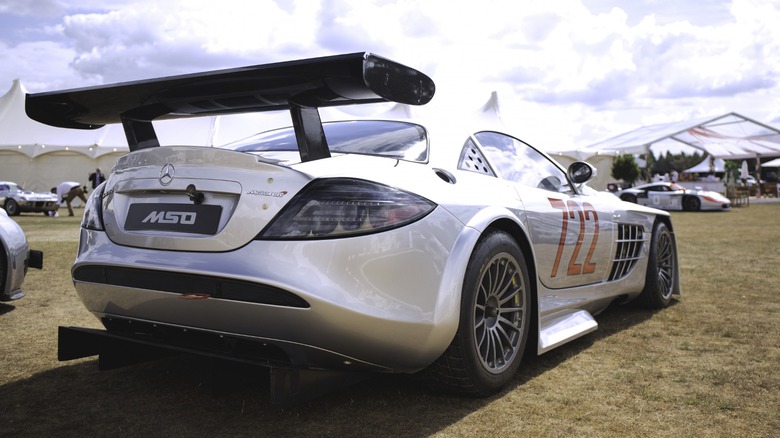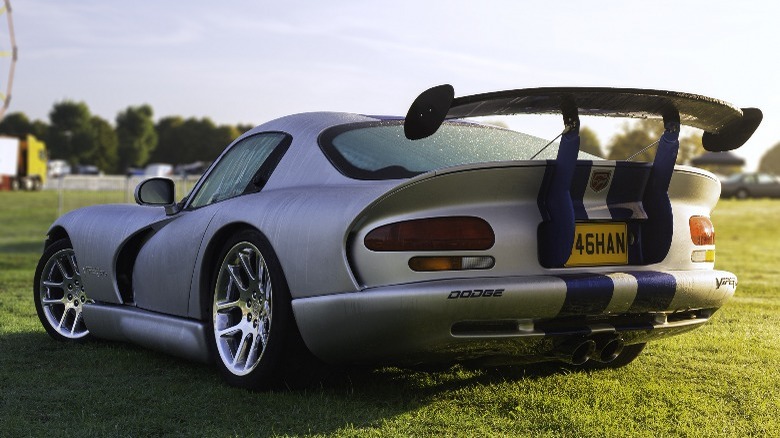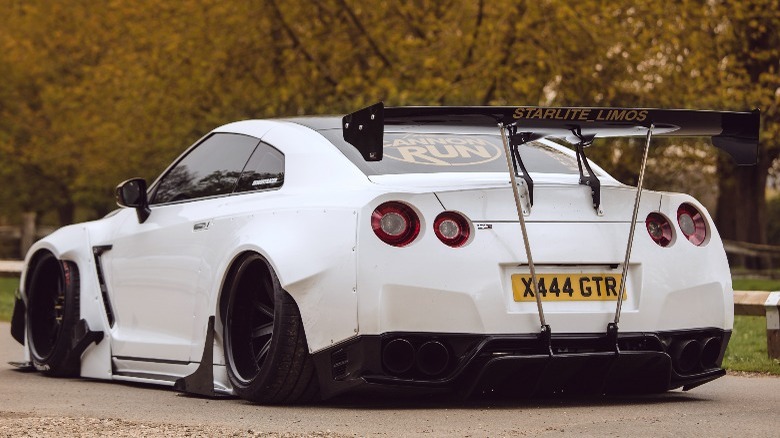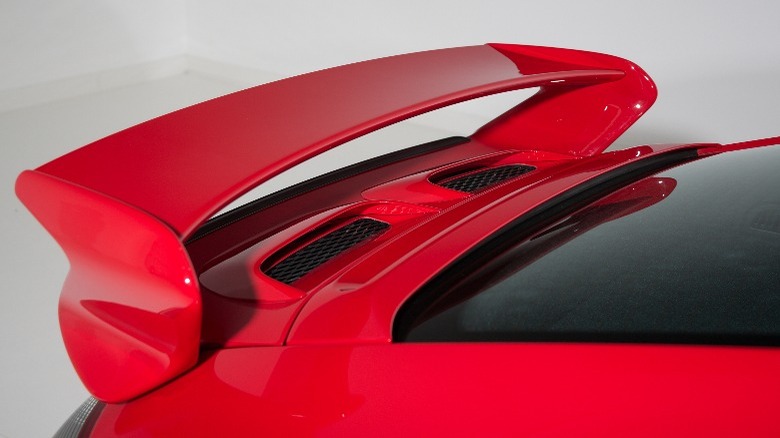Do Rear Spoilers Really Make A Difference In Downforce?
In essence, the end goal of a car is simple: to get you from point A to point B. It is when you get specific about how this procedure is done that makes all the difference. The comfort, handling, acceleration, power output, and fuel economy are vital criteria that determine a car's driving experience.
Car makers have myriad tricks up their sleeves to make the driving experience more pleasant for their targeted audience. What's more, car enthusiasts have no shortage of aftermarket parts and modifications to enhance their rides. Rear spoilers (or rear wings) are one of the most distinctive modifications in the automotive world.
Besides the cool factor, rear spoilers can vastly enhance a car's handling. That is, of course, if installed properly. On the other hand, it is not rare to find a tricked-out Civic with tons of cosmetic upgrades and assume the wacky wing installed on the trunk door is there just to show off.
Depending on the vehicle and the shape of the spoiler, installing a rear spoiler can be anything from a cosmetic upgrade to a technical aerodynamic mod that increases downforce and reduces drag. To understand which spoilers are practical and which ones are for show, you must first know what rear spoilers are meant to do to a vehicle's aerodynamics.
What is a rear spoiler (wing) intended for?
Aerodynamics is the science of how air flows around an object, especially when that object is in motion. Why is it important in the automotive world? Because wind resistance can heavily affect a car's acceleration, handling, and fuel economy. Ideally, you'd want to design a car that allows air to flow along its curves and edges as smoothly as butter, to minimize wind resistance. With that in mind, rear spoilers are meant to do two critical things: increase downforce and reduce drag.
Tire grip and traction are critical factors in a car's handling. Especially for performance-oriented cars, you need to create more downforce to keep the tire securely stuck to the tarmac. The easy solution is to add more weight to the car to prevent it from sliding away at high speeds. However, added weight directly affects the car's acceleration and sabotages the handling in other ways. Instead, engineers have come up with spoilers to take care of downforce at high speeds.
A spoiler creates a surface that redirects the wind. As the wind hits the surface and goes up, the spoiler pushes down on the car; this is Newton's third law of motion. The faster the car goes, the more noticeable the effects of a rear spoiler will be. For example, the McLaren Senna GTR's massive rear wing is a prime example of a well-engineered aerodynamic piece that creates lots of downforce.
Moreover, spoilers are used to reduce drag. Drag is air's natural resistance against an object in motion. Rear spoilers allow cars to cut through drag and reduce the turbulence that comes with it.
If not used correctly, rear spoilers can do more harm than good
As mentioned earlier, higher speeds require more downforce to ensure the car's tires have enough traction on the road. Lack of downforce can make the car slide away and, in extreme cases, even make the car fly off the track. In the 24 Hours of Le Mans in 1999, Peter Dumbreck's Mercedes race car didn't have enough downforce to keep the car on the track and went airborne! It became one of the scariest crashes in the history of Le Mans.
While downforce is important, too much downforce can cause trouble. Excessive downforce can slow the car down by increasing tire friction too much at higher speeds. On the other hand, if not designed properly, a rear spoiler might add no significant downforce at all.
Another vital effect of rear spoilers is weight distribution. Yes, in general, more downforce makes maneuvering through tight corners easier at higher speeds. However, rear spoilers alter the weight distribution of your vehicle. It is important to have enough weight distributed to the front wheels for handling. Too much downforce going to the rear axle alone can damage the car's responsiveness in corners and make it understeer.
Do spoilers make any difference in everyday commuter cars?
In our test drive, the Porsche 911 GT3 RS impressed us with its aerodynamic features, and the gigantic rear spoiler proved to be beneficial to the car's track-oriented spirit. Although initially intended for race cars, rear wings are easy to find as factory-installed items on family haulers and daily commuter cars.
As discussed, rear wings show their function when you're driving at higher speeds. The tiny wing on a trendy and sporty-looking crossover won't do much in terms of adding downforce or reducing drag when you're going 50 mph to work.
This is also true in the world of aftermarket parts and modifications. Installing a poorly designed and heavy rear spoiler on your project car can surely check off the Fast and Furious aesthetics, but it might only add excessive weight to your ride and reduce steering responsiveness. Unless designed with precision, adding a spoiler won't really cause any noticeable enhancements to your vehicle's performance.
What mods can you opt for instead of a spoiler?
Spoilers are relatively easy to install and can make your car look cooler when taking it to the car meet on the weekends. However, there are plenty of affordable mods you can opt for that actually boost your car's performance. Generally speaking, if you're looking for performance upgrades, a rear spoiler should not be on your Top 10 list.
Instead of a spoiler, you can install a cold air intake system to enhance your car's airflow. Oxygen is just as important as fuel for your engine to run. Cooler air is denser and, therefore, more rich in oxygen. Not only can a cool air intake noticeably boost your car's performance, but it also can increase fuel efficiency.
If you're looking for a mod to improve handling and enhance tire grip, getting new tires can be significantly more beneficial than installing a spoiler. Generally, performance tires are much stickier than regular models. Getting two pairs of sticky tires can significantly change how your car behaves in corners.




